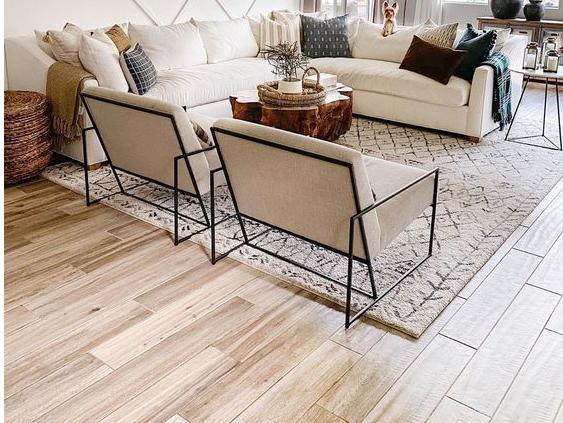Homes, The Market and You

Homemade Hot Chocolate
Nothing beats a homemade hot chocolate when you're leaning into that cozy holiday vibe. To make it feel truly special, the secret is focusing on texture (creaminess) and aromatic spices.
Here is a foolproof recipe for a "Grown-Up" Holiday Cocoa, followed by some festive ways to level it up.
The "Velvet Holiday" Base
Yields 1 serving
- 1 cup Whole milk (or oat milk for extra creaminess)
- 1 tbsp Unsweetened cocoa powder (Dutch-processed is best)
- 1-2 tbsp Semi-sweet chocolate chips (for that rich, melted texture)
- 1 tbsp Maple syrup or brown sugar
- A pinch of sea salt (crucial to bring out the chocolate flavor)
- A splash of vanilla extract
Instructions
Whisk the Dry: In a small saucepan over medium-low heat, whisk the cocoa powder and sugar with a tiny splash of milk to create a smooth paste (this prevents clumps).
Heat the Liquid: Slowly pour in the rest of the milk and whisk until steaming, but do not let it boil.
Melt the Chocolate: Add the chocolate chips and salt. Stir constantly until the chocolate is fully melted and the drink looks glossy.
The Finish: Remove from heat, stir in the vanilla, and pour into your favorite heavy mug.
Enjoy!
Buy the House with Potential or Keep Hunting?
In Ontario’s tight real estate market, a house with “endless potential” often hides significant financial risks. While fixer-uppers offer a path to homeownership, the cost to unlock that potential rarely aligns with agent promises.
The Real Cost of "Some Work"
In 2025, renovation costs typically fall into three tiers:
Cosmetic ($17k–$40k): Painting (~$10k), flooring ($5k–$20k), and fixtures.
Needs TLC ($42k–$72k): Includes a kitchen refresh (counters/cabinets) and bathroom updates.
Handyman Special ($62k–$117k+): Full gut renovations of kitchens and multiple bathrooms.
Calculating ROI
Not all upgrades pay off. A mid-range kitchen remodel usually returns 75–100% of its cost, and fresh paint offers high perceived value. However, beware of "over-renovating." If the price gap between renovated and original homes in your neighborhood is only $30k, spending $60k is a losing move.
Hidden Dangers
Beyond aesthetics, watch for "money pits":
Systems: Faulty wiring ($5k–$15k) or a failing roof ($8k–$12k).
Structural: Foundation cracks or unpermitted additions are major red flags.
Carrying Costs: Paying both a mortgage and rent during a six-month renovation erodes your budget.
The Verdict
A fixer-upper is a smart move only if you secure a significant purchase discount and the "bones" are solid. Always get a professional inspection and include a 20% contingency buffer in your budget. Remember: you aren't just buying a home; you’re managing a high-stakes construction project.

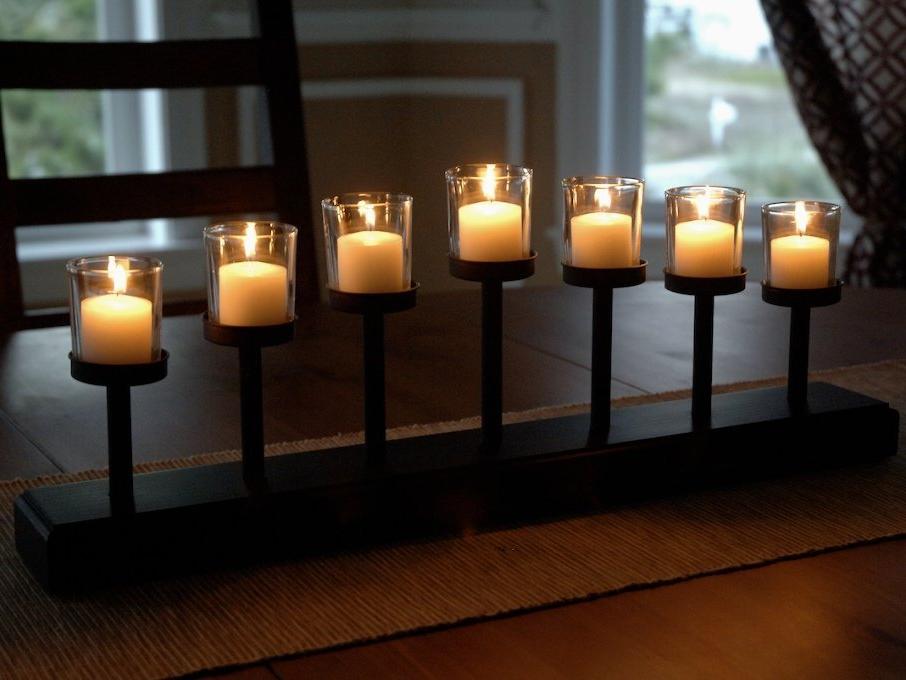
Hosting an Open Houses in Winter
Hosting an open house in the winter may seem daunting, but with the right preparation, you and your agent can make your home feel warm, inviting, and memorable for potential buyers!
Here are the top tips every homeowner should know before their agent hosts an Open House this season.
1. Prioritize Safety and Curb Appeal
Winter weather can be unpredictable, so start by clearing walkways, steps, and the driveway. Shovel snow, add salt to prevent ice, and ensure outdoor lighting is bright and welcoming. Simple touches like a winter wreath or evergreen planters can boost curb appeal without feeling too seasonal.
2. Create a Warm, Cozy Atmosphere
Inside, make sure your home feels comfortably warm. If you have a fireplace, lighting it can instantly elevate the ambiance. Add cozy elements like soft throws, textured pillows, or warm-toned accents to help buyers feel at home the moment they step inside.
3. Maximize Light
Shorter days mean less natural light, so open all blinds and curtains to let in as much daylight as possible. Turn on overhead lights and lamps in every room to create a bright, inviting environment.
4. Keep It Clean and Dry
Winter often brings wet boots and slush. Place a rug or boot tray near the entryway and keep towels handy to wipe up moisture quickly. A clean, dry entrance sets a positive tone.
5. Offer Seasonal Comforts
Warm beverages like cocoa, tea, or cider can make your open house feel extra welcoming. This simple gesture encourages visitors to relax and spend more time exploring your home.
By focusing on warmth, safety, and comfort, homeowners can turn a winter open house into a standout experience for buyers.
5 Essential Tips from a Real Estate Expert on Selling the Holiday Vibe Without Hiding Your Home's Value in Alliston, Everett, Lisle, and New Tecumseth
The Christmas season is magical, and showing your home in Alliston, Everett, Lisle, or New Tecumseth during the holidays offers a unique advantage: you get to sell warmth, atmosphere, and the feeling of "home for the holidays."
However, festive cheer must be managed! Too much clutter or personalization can turn a cozy showing into a crowded disaster. As a local real estate expert, here are five essential tips to get your house seen in its best light this Christmas.
1. Prioritize Curb Appeal & Safety (The First "Wow")
The first impression a buyer gets when approaching your house sets the tone for the entire showing. In the shorter, darker days of a New Tecumseth winter, good exterior lighting is critical.
Simple is Stunning: Skip the giant inflatables and flashing multi-coloured lights. Focus on timeless elegance: a simple, tasteful wreath on the front door and classic white string lights outlining the front porch or entryway.
Pathways First: Ensure all walkways, especially in Everett and Lisle, are shoveled, salted, and hazard-free. A clean, safe path says the home is well-maintained and ready for Canadian winter living.
2. Master the Art of the "Strategic Tree"
A Christmas tree is the ultimate seasonal centerpiece, but its size and location must be carefully managed so it doesn't shrink the room.
Scale Matters: For a smaller living room or den, choose a slim, space-saving tree. It adds atmosphere without blocking natural light or making the room feel cramped.
Keep it Neutral: Use universal, elegant ornaments—metallics (silver, gold, bronze), white, or classic pinecones/berries. Remove all personalized items, like family photos or sentimental ornaments, to help buyers envision their family holiday in the space.
3. Engage the Senses, Subtly
A home should feel warm and inviting, but holiday scents can be overpowering. Appeal to the buyer's emotions without causing a distraction.
The Warmth Factor: If you have a fireplace, stage it beautifully with simple garland and a set of clean logs, creating a cozy focal point. Use soft, warm-toned lighting throughout the main floor.
Aroma Magic: Avoid strong sprays or heavy candles. Instead, subtly simmer cinnamon, cloves, or vanilla on the stovetop. This provides a gentle, welcoming aroma that complements, rather than competes with, the home’s features.
4. Highlight Architectural Details, Don't Hide Them
Every piece of décor should draw the eye toward a unique selling feature of the home, not away from it.
Draw Attention: Use subtle evergreen garland to accentuate an elegant staircase railing or a beautiful mantel. Place a tasteful, simple holiday centerpiece on the dining table to showcase its entertaining potential.
Declutter More: The biggest danger of holiday staging is clutter. Put away all non-essential items, especially extra seasonal toys or gifts, ensuring your storage spaces and closets look spacious. This attention to detail demonstrates the quality of homes I represent in Alliston.
5. Don't Forget the All-Important "Pre-Showing Photo"
If you are listing your home for sale during the holidays, take your high-quality listing photos before you decorate heavily.
Future-Proofing: If the house sells after the holiday season is over, you don't want your listing photos to look dated. Professional, non-holiday photos ensure your listing stays fresh and relevant well into the new year.
🎁 Ready for Your Home's Best Season?
Selling or buying during the holidays can be a huge advantage when done correctly. If you're ready to put your home's best foot forward, or if you're looking for the perfect house to spend your next Christmas in, let's connect.
I am dedicated to helping clients buy and sell real estate across Alliston, Everett, Lisle, and the entire New Tecumseth and Adjala Tosorontio region.
Contact the top real estate agent in New Tecumseth today for a free home valuation or a customized holiday staging consultation! https://agents.royallepage.ca/marsha/contact-me
Looking for Seasonal Fun?
Nov14th - Dec20th
Niemi Family Farm in Mount Albert is a beautiful Scandinavian Christmas Market with up to 50 Vendors made up of local businesses, there is a farm bakery, Cafe's, Food trucks and lots of christmas cheer for the whole family!
Feel the Magic of Christmas at this Indoor/Outdoor treasure that runs yearly from Nov14th -Dec20th
Fridays and Saturdays 12pm to 8pm!
www.niemifamilyfarm.ca


Spooky but Safe: A Fun Guide to Halloween Decorating Safety In Alliston, Everett, Lisle and New Tecumseth
Halloween is one of the most magical times of year—when cobwebs are encouraged, ghosts are welcome, and creativity runs wild! Whether you’re transforming your home into a haunted mansion or simply adding a few festive pumpkins to the porch, safety should be part of the plan. Because let’s face it—nothing kills the Halloween vibe faster than a trip to the ER or a fire hazard scare. 👻
Here’s how to keep your decorating spooky, sparkly, and safe this Halloween:
🕯️ 1. Light Up the Night—Safely
Candles create the perfect eerie glow, but they’re also one of the biggest Halloween hazards.
Try this instead:
Use battery-operated candles or LED tea lights inside pumpkins or lanterns. They look just as good and won’t set your decorations—or costume—on fire.
If you must use real candles, keep them away from walkways, curtains, and flammable materials (like fake cobwebs and paper decorations).
💡 Pro tip: LED string lights come in every color imaginable. Orange, purple, or even ghostly green lights add festive flair—without the flame.
🧙 2. Watch Those Walkways
Trick-or-treaters are focused on candy, not footing! Keep your front yard and porch trip-free zones:
Clear cords, hoses, and decorations from walkways.
Use cord covers or tape to secure electrical cords.
Check that steps and pathways are well lit—dim light might feel spooky, but safety first!
👟 Bonus tip: If you’re going all-out with fog machines or inflatables, make sure they don’t block paths or doorways.
🕸️ 3. Choose Fire-Resistant Decorations
Many store-bought Halloween decorations are made from paper or synthetic materials that can easily catch fire.
When shopping, look for labels that say “flame resistant” or “flame retardant.”
🔥 Keep these items away from open flames, heat sources, and light bulbs—especially those creative DIY decorations made from cardboard or fabric.
🧛 4. Outdoor Electrical Safety = No Shocks Allowed
Before plugging in lights or inflatable ghosts, check the labels:
Use outdoor-rated cords and lights only.
Avoid overloading outlets or extension cords.
Keep all plugs and connections off the ground and away from puddles or damp grass.
⚡ Quick check: If a cord looks cracked, frayed, or damaged—replace it before using.
🎭 5. Keep Your Haunts Kid- and Pet-Friendly
Kids and pets are naturally curious (especially when flashing lights and spooky sounds are involved).
Avoid decorations with small detachable parts that could pose choking hazards.
Keep fog machine fluid, glow sticks, and batteries out of reach.
Loud motion-activated props? Use sparingly! Some little ones (and furry friends) might not find that cackling witch as funny as you do.
🦇 6. Mind the Weather
If your haunted yard is outdoors, secure all decorations properly. High winds can turn your blow-up Frankenstein into a runaway monster.
Anchor props and inflatables.
Bring in delicate or lightweight items if storms are in the forecast.
👻 7. Plan for a Safe Tear-Down, Too
Once the last trick-or-treater has come and gone, store your decorations safely:
Wrap cords neatly to prevent tangling and damage.
Store flammable items in a cool, dry place.
Label storage boxes so next year’s decorating session is a breeze!
🎃 Final Treat: Safety Doesn’t Have to Be Scary
Decorating for Halloween is all about creativity and fun—but a few smart precautions make sure the only screams this season are for candy, not emergencies. So grab your lights, your pumpkins, and your imagination—and make your home the safest haunted house on the block!
Stay spooky, stay safe, and have a fang-tastic Halloween! 🦇
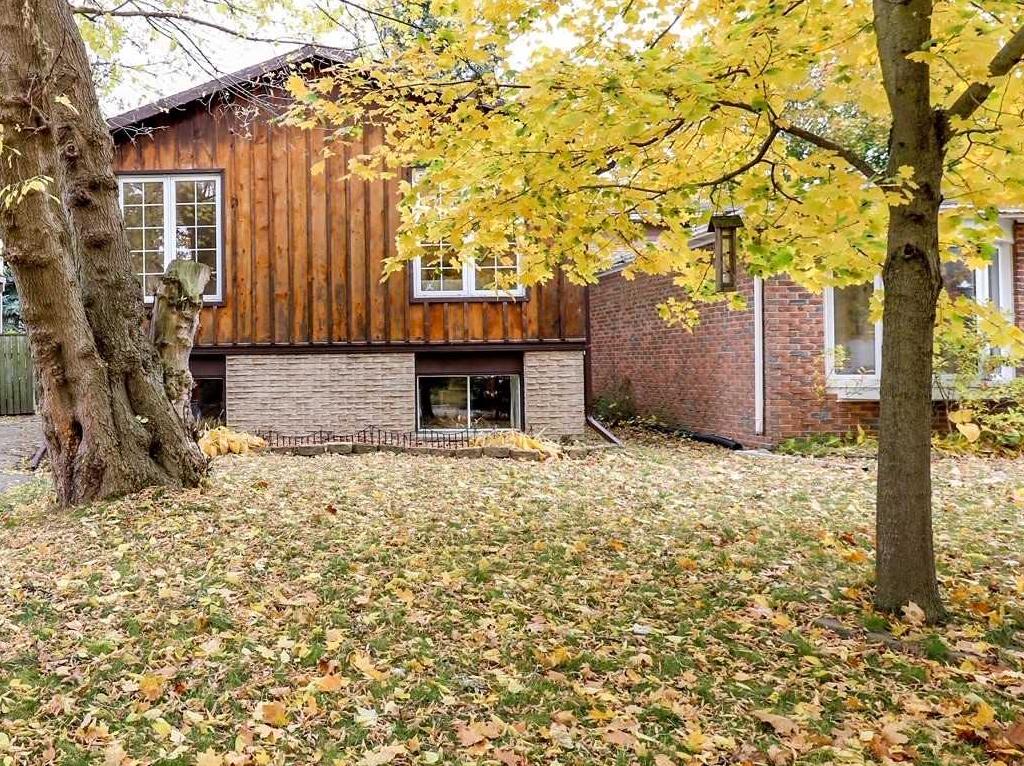
5 Tips to Get Your House Ready for Winter
Fall is the perfect time to prep your home for the cold months ahead. Tackling a few simple maintenance tasks now—like cleaning gutters, protecting pipes, and trimming trees—can save you from expensive repairs and major headaches when the temperature drops. As a real estate agent serving Alliston, Everett, Lisle, and the greater New Tecumseth area, I know how critical this maintenance is to preserving your home’s value, especially before our serious Canadian winters hit.
Here’s your quick winter-prep checklist:
1. Protect Indoor Pipes
Frozen pipes can burst and cause serious water damage. Insulate exposed pipes in unheated areas like basements, attics, crawl spaces, and under sinks—especially along exterior walls. Remember, 37% of burst pipes occur in unheated basements!
2. Insulate Your Attic
A poorly insulated attic means heat (and money) going right out the roof. Adding insulation now helps cut heating costs all winter long.
3. Repair Loose Roofing Shingles
Snow and wind can turn loose shingles into major leaks. Hire a licensed roofing contractor to inspect and fix any damage before winter sets in.
4. Clean and Inspect Gutters
Clogged gutters can cause water damage and ice dams. Remove leaves and debris, and make sure gutters are firmly attached so melting snow flows freely.
5. Secure Outdoor Water Sources
Before the first frost, drain and store garden hoses and sprinklers. Shut off the water supply to outdoor faucets, then open the spigots to drain leftover water and prevent frozen pipe bursts.
Taking care of these fall tasks now can save you money—and a lot of stress—later.
Thinking Beyond This Winter?
Winterizing your home is about preserving its value and comfort. Whether you’re getting your Alliston starter home ready for its first frost, or you're preparing to list a beautiful New Tecumseth acreage in the spring, I'm here to help.
If you have questions about home value, winter curb appeal, or are ready to search for your next home in Alliston, Everett, or Lisle, contact the top local real estate agent today!
Happy prepping!
Heated Floors: Everything You Need to Know
Picture this – it’s a chilly fall morning and when you step into your kitchen to make yourself a cup of coffee, your bare feet are warmed by the floor beneath you. Sounds nice, doesn’t it?
Heated floors are a great alternative to traditional heating methods, and they can keep your home, and your toes, warm all through the colder months. So whether you are planning your next home remodel in Barrie, or considering buying a home with heated floors in Alliston, here is everything you need to know when deciding if heated flooring is the right choice for your home.
What are heated floors?
Heated floors, also known as radiant heating, are a type of heat system that is located underneath the flooring of the home. With radiant heating, the warmth rises evenly from below via heat radiation, so the temperature of the room is uniform from top to bottom, rather than hot air rising from forced-air systems. Although expensive to install upfront, this efficient way of heating is a great alternative to traditional heating methods and may be worthwhile for your household in the long run.
What are the different types of heated floors and how do they work?
There are two types of radiant floor heating systems: hydronic and electric.
Hydronic radiant floor heating: With this type of radiant heating system, hot water is generated from a boiler, which is then pumped throughout the floors via tubes. These pipes snake throughout the flooring, radiating thermal energy through materials like tiles, concrete, or wood. Hydronic heating is more efficient than conventional heating and works best at heating larger areas – more typical for whole-house installations rather than room by room. Since hydronic systems require additional parts like a boiler and a pump, the upfront cost of installation can be expensive. However, you can save up to 30% more in operating costs compared to conventional heating systems.
Electric radiant floor heating: This type of radiant heating system is powered by electric wires located underneath the flooring. Due to the cost of electricity, warming an entire home with electric radiant heating can quickly become expensive. Therefore, this method is most popular for heating individual rooms, such as a bathroom or bedroom, rather than the whole house. Electric installations heat up floors in about 30-60 minutes and can be set to a schedule, heating your floors in the morning at specific hours – or whenever you need it.
How much does it cost to install?
When it comes down to price, hydronic solutions are a more cost-effective alternative in the long run since the operating costs are lower than electric systems. This is because the water conducts and holds heat more efficiently which lowers the operating time. Hydronic heating systems range from $6-$20 averaging at $13 per square foot for professional installation, while electric heating systems range from $8-$15 averaging at $11 per square foot.
Electric radiant floor systems are cheaper to install because they are composed of electrical wire mats and do not require additional parts that hydronic systems demand. The rate of installation can vary based on a number of factors. For example, if you already have a boiler or a water heater and the floors are already opened, it will be easier for plumbers to install the heating system. If you are remodeling your home and need to open the floors for install, that will add to the cost of installation. If you have some experience wiring and installing pipework, then a DIY radiant floor heating can cut your prices down significantly.
What are the advantages and disadvantages of radiant floor heating?
When contemplating radiant floor heating for your next remodel or home, you’ll want to consider the advantages and disadvantages of radiant floor heating.
Advantages
Silence: When compared to air forced systems, there is little to no noise with radiant floor heating systems. This is because there isn’t a furnace that turns on and/or vents to push the warm air out.
Non-allergenic: Radiant floor heating systems depend on conduction throughout the home through systems in the floors and walls. Since there are no vents or ducts, there is no dust being circulated that could worsen allergies.
Energy efficiency: Without ducts and vents required for the warm air to circulate, radiant heating is much more efficient in keeping your home warm. Traditional heating systems can leak warm air through ducts, forcing you to keep the heat on for longer periods of time.
Consistent heat: Heated floors radiate heat to objects in a room, and because of this, the air temperature stays consistent throughout the areas of your home rather than rising to the ceiling.
Maintenance: Minimal maintenance is required for radiant flooring and most companies that install this type of heating system offer a minimum of a 25-year warranty.
Disadvantages
Cost: The costs of radiant floor heating systems overall are dependent on the size of the project and which type of system you opt for. Installation can be expensive when compared to forced air systems – especially if you’re remodeling an existing home. Radiant heating can be made more affordable if installed in only one or two rooms – the bathroom is always a popular choice.
Installation: If you’re retrofitting an existing home that currently has a forced-air system, the process of installing radiant heating requires removing the existing flooring so the systems can be put in place, all of which will be costly. If you’re building new construction, see if your contractor can work within your budget to install radiant heating throughout your new home.
What types of flooring work best for radiant floor heating systems?
While there are many different types of flooring options compatible with radiant floor heating systems, which one is the most efficient? The most common materials to use with heated flooring are ceramic and stone tile. There are several reasons for this – they conduct heat effectively, and they are a common flooring material in areas where people are most often barefoot. Other popular flooring materials that can be used include vinyl and linoleum, wood, or carpeting. However, keep in mind that if any flooring material has too high of a degree of insulation, your heating system will be less effective.
So, whether you are ready to start your next remodeling project, or looking for houses with heated flooring as a home feature, consider everything that goes into radiant heating so you can choose the best option that fits your needs and keeps you warm and cozy all year round.
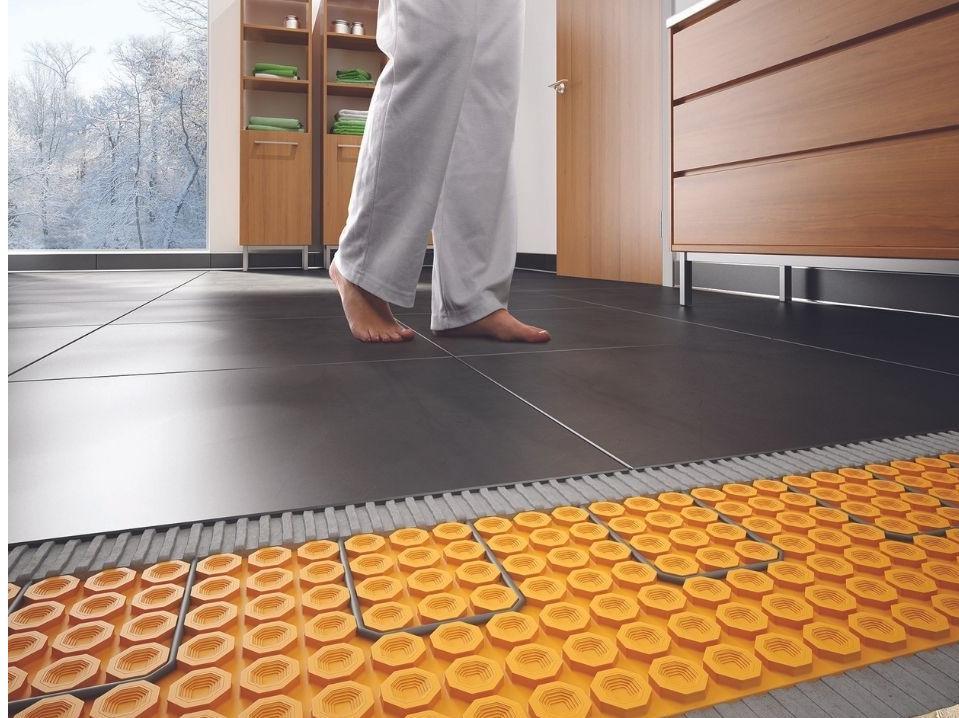
Fall in Love with Home This Autumn 🍂🏡
There’s something magical about fall — the crisp air, cozy sweaters, and golden leaves drifting from the trees. It’s a season that invites us to slow down, sip a warm drink, and appreciate the comforts of home. And if you’ve been thinking about making a move, autumn might just be the perfect time!
The fall real estate market tends to be calmer than the busy spring and summer seasons, which means more serious buyers and sellers — and less competition. Homes look especially charming with autumn décor, and buyers can really envision cozy nights by the fireplace or holiday gatherings in a new space.
For sellers, a few seasonal touches like a festive wreath, warm lighting, or a pumpkin on the porch can make your home feel extra welcoming. For buyers, it’s a great time to explore neighborhoods in their most colorful season and take advantage of end-of-year opportunities.
Whether you're dreaming of a bigger kitchen for holiday cooking, a yard full of fall color, or just a fresh start before the new year, I’m here to help you every step of the way.
Let’s find you a place you’ll fall in love with — this season and for many seasons to come.
🍁 Happy Fall!


Iced Pumpkin Cookies
These soft pumpkin cookies with sweet icing drizzled on top are always a hit with kids and adults alike! Great for holiday cookie trays.
Cookies:
- 2 ½ cups all-purpose flour
- 2 teaspoons ground cinnamon
- 1 teaspoon baking powder
- 1 teaspoon baking soda
- ½ teaspoon ground nutmeg
- ½ teaspoon ground cloves
- ½ teaspoon salt
- 1 ½ cups white sugar
- ½ cup butter, softened
- 1 cup canned pumpkin puree
- 1 large egg
- 1 teaspoon vanilla extract
- 2 cups confectioners' sugar
- 3 tablespoons milk
- 1 tablespoon melted butter
- 1 teaspoon vanilla extract
- Gather all ingredients. Preheat the oven to 350 degrees F (175 degrees C). Grease two cookie sheets.
- To make the pumpkin cookies: Combine flour, cinnamon, baking powder, baking soda, nutmeg, cloves, and salt in a medium bowl.
- Cream sugar and butter together in a mixing bowl until fluffy, 2 to 3 minutes. Add pumpkin, egg, and vanilla; beat until creamy. Mix in flour mixture until combined.
- Drop tablespoonfuls of dough onto the prepared cookie sheets; flatten slightly.
- Bake in the preheated oven until centers are set, 15 to 20 minutes, switching racks halfway through. Transfer cookies to a wire rack to cool to room temperature, about 30 minutes.
- Meanwhile, make the icing: Stir together confectioners' sugar, milk, butter, and vanilla in a bowl until smooth. Add milk as needed, to achieve drizzling consistency.
- Drizzle icing over cooled cookies with a fork.
Fall is the Season of Opportunity!
As the leaves begin to change and the air turns crisp, the Ontario real estate market enters a new season of opportunity. While spring often gets the spotlight, fall presents a unique and compelling time for both buyers and sellers. The bustling energy of summer gives way to a more focused and intentional market, where serious buyers are motivated to find their new home before the winter holidays.
For sellers, this means less competition and a pool of highly motivated potential homeowners. Staging your home to highlight the cozy, inviting atmosphere of autumn can create a powerful emotional connection with buyers. Think warm lighting, seasonal decor, and the welcoming scent of cinnamon.
For buyers, the fall market often offers more choice and a chance to make a more thoughtful decision. With rising inventory in many parts of the province, you'll have more time to consider your options and negotiate. The expected easing of interest rates this season could also provide a boost to affordability, making it an ideal time to get a pre-approval and explore your options.
Whether you're looking to sell your current home or find your dream home, the fall season in Ontario is brimming with potential. Let's embrace this beautiful season and work together to achieve your real estate goals.


Make your House Irresistible to Buyers This Fall
Thinking of selling your home this fall? You're in luck! Autumn brings a cozy, inviting atmosphere that can make your house irresistible to buyers. With less competition than in the spring and summer markets, motivated buyers are ready to make a move before the holidays. Here are a few tips to make your home stand out.
Boost Your Curb Appeal 🏡
First impressions are everything. While summer gardens may be fading, fall offers its own unique charm. Keep your lawn tidy by raking up fallen leaves and trimming shrubs. Place a few pumpkins and gourds on the porch and add some potted chrysanthemums for a pop of color. A fresh coat of paint on the front door and a new welcome mat can also go a long way.
Create a Cozy Interior 🛋️
Lean into the "hygge" vibe. Inside, focus on creating a warm and inviting space. Use soft, layered lighting with lamps and warm-toned bulbs to combat shorter daylight hours. Strategically place plush throws and pillows on couches to make rooms feel cozy. Keep decor minimal and neutral—a subtle seasonal wreath or a bowl of apples is more effective than an overpowering holiday display. Be sure to address any drafts and set the thermostat to a comfortable temperature.
Highlight Key Features 🔥
Does your home have a fireplace? Now's the time to show it off! Stage it with neatly stacked firewood or light it for a showing to create a focal point. You can also highlight other cold-weather features, like a high-efficiency furnace or insulated windows, by having maintenance records ready for potential buyers. By making these small, intentional changes, you can appeal to buyers' emotions and help them envision themselves settling in just in time for the holidays.
Canada’s Housing Market in Fall 2025: A Tale of Two Perspectives
As Canada’s real estate market heads into fall 2025, two of the nation’s largest brokerages—Royal LePage and RE/MAX Canada—offer contrasting, yet insightful, views on where things stand.
According to Royal LePage, the market is stabilizing after years of volatility. The firm forecasts a 3.5% increase in aggregate home prices by the end of the year, with stronger gains in cities like Montreal (+6.5%) and Quebec City (+11%). Royal LePage believes that improved consumer confidence and expectations of lower interest rates will drive a modest but steady recovery. Detached homes, in particular, are seeing renewed demand as buyers seek space in suburban markets.
On the flip side, RE/MAX Canada takes a more cautious stance. In its Fall Housing Market Outlook, RE/MAX reports that 62% of markets saw sales decline year-over-year in early 2025, particularly in Ontario and British Columbia. National home prices are projected to drop by 6.5% this fall, with total sales expected to fall 5% by year-end. However, RE/MAX also sees a silver lining—54% of Canadians believe this season presents a prime buying opportunity, thanks to increased listings and improved affordability.
Together, these perspectives suggest a market in transition—not in crisis, but not yet fully recovered. Whether prices climb or contract may ultimately depend on local conditions, interest rates, and how quickly sidelined buyers re-engage.
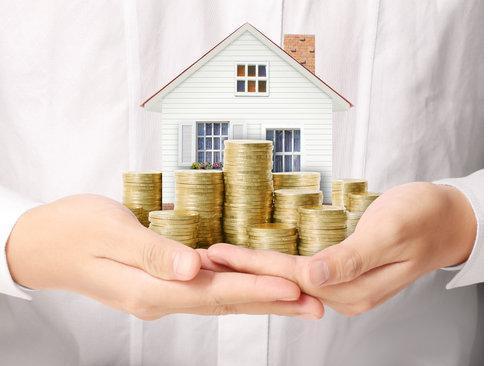

Fall is Here
September is here, and with it comes the perfect opportunity to embrace the beauty of autumn. As the leaves begin to turn and a crispness fills the air, New Tecumseth transforms into a fall wonderland. While the real estate market is still buzzing, it's also the perfect time to explore the local charm and festive spirit of our community.
Whether you're a long-time resident or a new face in town, there's so much to discover this season. From family-friendly pumpkin patches to breathtaking scenic drives, our area is packed with activities that celebrate everything we love about fall.
This guide is your go-to resource for making the most of the season. So grab a cozy sweater, a pumpkin spice latte, and get ready to fall in love with New Tecumseth all over again.
Pumpkin Patches
- Murphy's Farm Market and Bakery: Located in Alliston, this fifth-generation family farm has a pumpkin patch and a fall festival. They also offer a market with fresh produce and baked goods.
- Rounds Ranch: Situated northeast of New Tecumseth near Elmvale, this ranch offers a "Pumpkin Mania" event in October with tractor rides to a pumpkin patch, pumpkin bowling, and a corn maze.
- Laura's Farm Stand: This farm stand offers a pumpkin patch, corn maze, and a farm market.
Apple Picking
- Downey's Strawberry & Apple Farm: Located in Caledon, this farm is about a 30-minute drive from New Tecumseth. They have an apple orchard and are a popular spot for picking.
- Applewood Farm: Located in Stouffville, this farm is another option for apple picking in the Greater Toronto Area and offers other fall activities like a corn maze and a pumpkin patch.
- Chudleigh's: This farm is in the Halton Hills area, which is a bit of a drive, but they have been a popular family tradition for over 50 years with over 18 varieties of apples.
Fall Festivals
- Beeton Fall Fair: This fair is a local highlight and is a great way to experience a traditional community event.
- Bluegrass Festival: The Tottenham Conservation Area is mentioned as a host for a Bluegrass Festival.
- Murphy's Fall Festival: As mentioned above, this farm in Alliston also hosts a fall festival.
Fall Colours Drive
For a spectacular fall foliage viewing experience, consider a scenic drive that starts in or near Barrie.
- The Oro-Medonte Route: This 127km loop takes you through the beautiful countryside of Oro-Medonte. Travel along winding backroads like Bass Lake Side Road, the 10th Line, and Old Barrie Road, which will lead you through a canopy of red, yellow, and orange trees. The route also goes through the village of Craighurst, where you can find shops and restaurants.
- Horseshoe Valley to Orillia: Take Highway 400 past Barrie to Horseshoe Valley Road. This drive will take you through stunning landscapes, including Horseshoe Valley, before leading you to Highway 12 and into Orillia. From there, you can take Highway 11 back to Barrie.
- For a local view, the Boyne River in New Tecumseth also provides a great spot to enjoy the changing colours on a more relaxed walk or short drive.
What City People Might Not Know About Country Septic Systems
If you're moving from the city to the countryside, you’re in for a learning curve—especially when it comes to plumbing. Unlike urban homes connected to a centralized sewer system, rural properties often rely on septic systems. And while they quietly do their job underground, there are a few things city dwellers should know before making the leap.
First off, a septic system isn’t just a tank—it’s a full wastewater treatment system buried in your yard. It includes a septic tank and a drain field (also called a leach field). Wastewater from your home flows into the tank, where solids settle to the bottom and liquids flow out into the drain field to be naturally filtered by soil.
Unlike city plumbing, you are responsible for your septic system’s maintenance. That means regular pumping (every 3–5 years) to remove solids, and being very careful about what goes down your drains. Harsh chemicals, grease, wipes (even “flushable” ones), and excessive water use can overload or damage the system.
Another surprise: you can’t build, park, or plant trees over your drain field. It needs unobstructed, well-drained soil to function properly. Driveways, patios, and even landscaping in the wrong spot can cause costly problems.
Also, be aware that septic inspections are crucial when buying rural property. An old or failing system can cost thousands to replace, and not every lender will finance a home with a subpar septic setup.
In short, septic systems are simple, effective, and low-maintenance if you respect how they work. For former city dwellers, it's one of those “out of sight, out of mind” things—until it isn’t.


Cleaning 101: First Impressions Matter
After years in real estate, I can tell you with certainty — clean homes sell faster and for more money.
Buyers don’t just see clutter or dust; they feel it. And nothing kills a great first impression like grime in the corners or streaks on the windows.
Before you list, think of cleaning as staging's secret weapon. Start with the basics: deep clean the kitchen and bathrooms until every surface shines. Wipe down baseboards, light switches, and cabinet faces—these details often go unnoticed by owners but scream “neglect” to buyers.
Windows should sparkle, and floors must look their best. If there’s a pet in the home, eliminate odors completely. A fresh, neutral scent can be your silent sales pitch.
Don’t forget the exterior. Sweep walkways, clean the front door, and power-wash siding if needed. Curb appeal starts the moment buyers pull up.
You don’t get a second chance at a first impression. A truly clean home tells buyers it’s been cared for—and that’s the kind of home they want to invest in.
Want help prepping your home for the market? I’ve got trusted cleaning pros on speed dial—just ask.
Why is Your Home Appraisal Crucial?
Home appraisals are a crucial part of the buying and selling process. Your agent's job is to provide an unbiased estimate of a home’s value so that it will be on the market at a competitive market price. A knowledgeable agent can assess things like the property’s square footage, condition, location, value of updates, and comparable recent sales in the area. They may also consider neighborhood trends, curb appeal, and overall market demand to determine a realistic valuation.
When preparing your home for an appraisal, make sure to clean up thoroughly, as well as make any small repairs. Fresh paint, landscaping, and minor upgrades can help make a positive impression during the visit and potentially increase your home’s appraised value.


Selling Your Home in the Summer: Tips for a Slow Market
Selling your home in the summer can be challenging—especially when the market is slow. However, with the right strategy, summer can still be an ideal time to attract serious buyers.
First, take advantage of the season’s natural appeal. Longer daylight hours and blooming landscapes give your home a bright, welcoming look. Focus on curb appeal—freshen up the lawn, plant colorful flowers, and keep the exterior clean and inviting.
Inside, stage your home to highlight light and space. Open blinds, use light fabrics, and maintain a cool, comfortable temperature during showings. A fresh, airy atmosphere can make your home stand out even when buyer interest is low.
In a slower market, pricing becomes even more important. Work with a knowledgeable real estate agent to set a competitive price that reflects current conditions without undervaluing your home.
Finally, be flexible and responsive. Serious buyers are still out there, and being willing to negotiate or accommodate their schedule could make all the difference.
A slow market doesn’t mean your home won’t sell—it just means you need to be smart, strategic, and proactive.
When Is It Time to Reduce the Price of Your Property?
Pricing your home correctly is one of the most critical factors in a successful real estate sale. While every seller hopes to get top dollar, sometimes the market speaks—and it’s saying your price might be too high.
Here are key signs that your property may need a price reduction:
1. Lack of Showings
If your home has been listed for a few weeks and there’s minimal to no showing activity, that's a red flag. Serious buyers often flock to new listings, so if they’re not even stepping through the door, the price may be scaring them off.
2. High Traffic, No Offers
You’re getting showings, maybe even second visits, but no one is making an offer. That usually means the home looks good—but not at your asking price. Buyers often compare multiple properties in the same price range, and if yours doesn’t stack up, they’ll move on.
3. Feedback Indicates Overpricing
Your agent should be collecting feedback from buyers’ agents after showings. If you're consistently hearing “It's overpriced compared to similar homes,” it’s time to take that seriously.
4. Your Home Is Sitting Longer Than Comparable Listings
Take a look at similar properties in your area. If they’re selling quickly and yours is lingering, the price is likely the culprit—assuming condition and marketing are on point.
5. Market Conditions Have Shifted
Real estate is dynamic. Interest rate changes, new listings, or seasonal slowdowns can all impact buyer demand. What was a fair price last month might now be out of touch with the current market.
How Much Should You Lower the Price?
A strategic reduction—typically 2-5% depending on your market—can reignite interest and attract a new wave of buyers. Your agent can help analyze local data to determine the right adjustment.
Bottom Line:
No seller wants to lower their price, but being proactive is often the best way to achieve your ultimate goal—a successful sale. Listen to the market, and don’t be afraid to pivot when necessary.


Beat the Summer Heat
stay cool!
Summer is officially here, and while we all love the sunshine, rising temperatures can make it tough to stay comfortable. Don't let the heat get you down! With a few simple strategies, you can beat the summer heat and enjoy everything the season has to offer.
First and foremost, hydration is key. Drink plenty of water throughout the day, even if you don't feel thirsty. Consider adding some refreshing fruit to your water or opting for electrolyte-rich beverages to replenish what you lose through sweat.
Next, dress for success. Light-colored, loose-fitting clothing made from breathable fabrics like cotton or linen will help keep you cooler than dark, tight clothing. And don't forget a wide-brimmed hat and sunglasses when you're outdoors to protect yourself from the sun's rays.
Finally, seek shade and stay indoors during peak hours. The sun is strongest between 10 AM and 4 PM, so plan your outdoor activities for earlier mornings or later evenings. If you're spending time outside, find shady spots under trees or awnings. Indoors, keep blinds and curtains closed to block out the sun, and consider using fans or air conditioning to create a comfortable environment.
By following these tips, you can stay cool, safe, and happy all summer long! What are your favorite ways to beat the heat?
Moving with Pets?
here's what you need to know!
When moving with pets, a key real estate tip is to prepare your new home to be pet-friendly before your pet arrives, ensuring a smooth transition and minimizing stress for your furry friend. This includes pet-proofing, setting up familiar items, and gradually introducing them to the new space.
Before the Move:
Pet-proof the new home:
Before even bringing your pet to the new house, make sure to secure any potential hazards like loose wires, toxic plants, or open windows/balconies.
Set up a familiar space:
Unpack your pet's essentials (food, water, toys, bed, litter box) and create a comfortable, designated area in the new home before your pet arrives.
Maintain routine:
Keep feeding and walking schedules consistent with their old routine as much as possible to reduce anxiety.
Update ID tags:
Ensure your pet's collar has up-to-date identification tags with your new contact information.
Consult the vet:
Schedule a vet check-up before the move and obtain copies of medical records, especially if moving to a new area.
During the Move:
Keep pets contained:
Use a crate or designated room during the packing and unpacking process to minimize stress and prevent escapes.
Travel safely:
If traveling by car, ensure your pet is safely secured with a harness or carrier.
Consider a "pet room":
If possible, designate a safe, quiet space in both your old and new homes for your pet on moving day.
After the Move:
Introduce gradually: Let your pet explore the new home one room at a time.
Provide comfort: Offer familiar toys, bedding, and other items to help them adjust.
Be patient: It may take time for your pet to acclimate to the new environment, so provide extra attention and reassurance.
Shower them with attention and love!


How to Prepare Your Home for a Summer Open House:
Tips to Make It Shine
Hosting an open house is your opportunity to make a fantastic first impression—and in the summer, your home has the perfect backdrop of sunshine and curb appeal to really wow potential buyers. But to truly make the most of it, a little strategic preparation can go a long way.
Here’s how to get your home open house–ready for the summer season:
1. Boost Your Curb Appeal
Your home's exterior is the first thing buyers will see—and summer makes it easier to show it off.
Mow the lawn, trim hedges, and edge the driveway and walkways.
Add fresh flowers in pots or garden beds for a burst of color.
Power wash siding, sidewalks, and your front porch to give everything a clean, polished look.
Paint the front door or add a new doormat for an inviting touch.
Tip: A well-kept yard in the summer heat shows buyers the home is cared for—inside and out.
2. Make the Inside Bright, Cool, and Comfortable
Summertime is warm and sunny, and your home should reflect that while staying cool.
Open curtains and blinds to let in natural light, but be mindful of harsh afternoon sun that can make rooms hot.
Set the thermostat to a comfortable, cool temperature before guests arrive.
Turn on ceiling fans and make sure air flows well through the home.
Bonus: Offer cool refreshments like chilled water, lemonade, or iced tea to make buyers feel welcome.
3. Declutter and Depersonalize
Buyers want to imagine themselves living in your home—not feel like they’re touring yours.
Remove personal items like family photos and fridge magnets.
Clear off countertops, shelves, and unnecessary furniture to make rooms feel larger.
Tidy closets and cabinets—buyers often peek inside!
Tip: Keep summer gear (like pool toys or sports equipment) neatly stored or out of sight.
4. Stage with Summer in Mind
Highlight the lifestyle your home offers during the warmer months.
Set up your outdoor spaces to feel like extensions of the home—arrange patio furniture, lay out cushions, and even light candles or hang string lights.
Decorate with seasonal touches like light throws, coastal decor, or fresh-cut flowers.
Use light, breathable fabrics for bedding and curtains to give a breezy, clean feel.
5. Eliminate Odors and Keep it Fresh
Summer heat can make odors more noticeable, so keep things smelling fresh.
Take out the trash, especially food waste, before the open house.
Clean pet areas thoroughly and consider relocating pets for the day.
Add fresh scents with candles, essential oil diffusers, or a subtle plug-in air freshener.
6. Don’t Forget the Little Details
Before your open house:
Vacuum and dust all rooms
Clean mirrors and windows
Replace burnt-out light bulbs
Set the dining table or kitchen island with place settings or a simple centerpiece
These final touches help buyers focus on the beauty and potential of your home, not on what needs fixing.
Final Thoughts
A summer open house gives your property the perfect opportunity to shine—literally. With thoughtful preparation, you can create a welcoming, polished environment that helps buyers fall in love with your home.
Ready to sell this summer? Take the time to prepare and show your home in its best light. You only get one first impression—make it count!
Just Moved In? Here Are the Best Ways to Get to Know Your New Neighborhood
Moving into a new home is exciting—but adjusting to a brand new neighborhood can feel a little overwhelming. Whether you’re in a bustling city or a quiet suburb, getting familiar with your surroundings will help you feel more at home and connected.
Here are some of the best ways to check out your new neighborhood and start settling in like a local:
1. Take a Walk (or Several!)
There’s no better way to explore than on foot. Walking around helps you discover small details you’d miss by car—like the best local coffee shop, hidden parks, or unique front yard gardens.
Bonus tip: Bring your dog, stroller, or just a smile—you’re more likely to meet neighbors this way.
2. Visit Local Shops and Restaurants
Skip the chains at first and try locally-owned businesses. You’ll often find better service, delicious food, and a chance to support your community.
Grab a coffee from the nearest café
Dine at a neighborhood restaurant
Browse your local farmers market or boutique shops
Ask the staff: “What do you recommend around here?” Locals love to share hidden gems.
3. Join Community Groups or Apps
Many neighborhoods have online communities where residents share news, events, and recommendations. Try:
Facebook groups
Nextdoor
Buy Nothing groups
Neighborhood associations
These are great places to learn about local events, get recommendations, or even borrow a ladder.
4. Attend Local Events and Festivals
Check community bulletin boards (at the library, café, or town hall) or your city’s website for events like:
Street fairs or farmers markets
Outdoor concerts or movie nights
Local parades or cultural celebrations
These events are perfect opportunities to meet people and see the neighborhood come alive.
5. Visit the Local Library or Community Center
Libraries often double as community hubs, offering everything from classes and book clubs to kids’ activities and local resources.
Your community center may have sports leagues, fitness classes, or neighborhood meetings you can join to get involved.
6. Talk to Your Neighbors
It may feel old-fashioned, but a simple introduction can go a long way.
Say hello when checking the mail or out for a walk
Attend a block party or offer to host a small get-together
Ask for local tips—like the best pizza or where to take your dog for a walk
People love talking about where they live, and it's a great way to break the ice.
7. Explore by Bike or Public Transit
Hop on a bike or ride public transportation to get a broader view of the area. This helps you understand traffic flow, access to local services, and proximity to schools, parks, and shopping.
8. Map Out Essentials
Take a little time to locate:
Grocery stores
Gas stations
Urgent care or hospitals
Schools and playgrounds
Public transportation stops
Knowing where these are ahead of time will save stress later and help you feel grounded.
Final Thoughts
Becoming familiar with your neighborhood doesn’t happen overnight—but the more you explore, the more connected you’ll feel. Say hello to neighbors, support local businesses, and be open to new experiences. Before you know it, you might be the one giving the warm welcome to someone new!


Let's Celebrate Dads
This weekend celebrate all the incredible dads, stepdads, grandpas, and father figures who help shape our lives with wisdom, kindness, and yes—plenty of dad jokes!
Here are 5 fun Canadian facts about Father’s Day:
While widely celebrated it’s not a statutory holiday in Canada, Father’s Day (the third Sunday in June) might not be a stat holiday—but that doesn’t stop Canadians from showing appreciation!
It’s a time for food and family
Many Canadian families celebrate with backyard BBQs, brunches, and outdoor activities—especially with Father’s Day landing near the start of summer.
Canadian dads are hands-on
Stats Canada reports an increase in fathers taking parental leave and being more involved in child care—go, modern dads! 🙌
Popular gifts? Think practical
Canadian dads often receive gifts like tools, sports gear, tech gadgets, and yes, the classic tie and socks combo.
Canadians spend big on Dad
On average, Canadians spend over $100 on Father’s Day gifts, making it one of the bigger retail holidays of the year.
No matter how you celebrate, today’s a perfect day to say thanks to the dads who’ve always been there. Happy Father’s Day!
What to Research Before Buying a Home: 10 Things Smart Buyers Always Check
Buying a home is one of the biggest financial decisions you’ll ever make — and doing your homework beforehand can save you from expensive surprises down the road. Whether it’s your first home or your fifth, knowing what to research before you buy can help you make a confident, informed decision.
Here are the top 10 things to research about a home before making an offer:
🏡 1. The Neighborhood
Location is everything. Look into:
School district ratings
Walkability and nearby amenities
Future developments or zoning changes
Commute times to work or key places
Even if the home is perfect, the wrong neighborhood can be a deal-breaker.
📊 2. Home Values and Market Trends
How does the home’s price compare to others in the area? Research:
Recent sales nearby
How long homes are staying on the market
Whether prices are trending up or down
This can help you determine if the home is priced fairly — and how competitive your offer needs to be.
🛠️ 3. Condition of Major Systems
Before you fall in love with the kitchen backsplash, dig deeper. Look into:
Roof age and condition
Plumbing and electrical systems
HVAC (heating, ventilation, and air conditioning)
Water heater age
These big-ticket items can be costly to replace, so know what you're getting into.
💡 4. Utility Costs
Ask for a year’s worth of utility bills from the seller if possible. It’ll give you a realistic sense of what to budget each month — and whether the home is energy efficient or not.
🧾 5. Property Taxes
Taxes can vary drastically even between neighboring towns. Research:
The current property tax amount
How often rates increase
Whether the area is due for reassessment
This could impact your monthly mortgage payment more than you think.
🏗️ 6. Rules and Fees
If the home is in a neighborhood with a condo association make sure to:
Review the bylaws and restrictions
Understand all fees
Ask about restrictions on paint colours or upgrades you plan to make
You don’t want surprise costs or strict rules you can’t live with.
📝 7. Home Inspection Reports
If the seller recently had an inspection done, ask to review it. Once under contract, hire your own independent inspector to dig deeper into the home’s condition — and help you avoid unexpected repairs later.
🌧️ 8. Flood Zone or Natural Hazards
Is the home in a floodplain weather prone area?
📐 9. Lot Lines and Property History
Review the official property survey to understand:
The boundaries of the lot
Any easements (like shared driveways or utility access)
Previous renovations or additions (and whether they were permitted)
🧑⚖️ 10. Legal or Title Issues
Make sure the title is clear of:
Liens
Legal disputes
Ownership complications
Your title company or real estate attorney will usually handle this, but it’s smart to understand what they’re looking for.
Bottom Line: Know Before You Buy
A beautiful home isn’t always a good home — and doing your research can make all the difference. The more you know, the more confident and protected you’ll be when it comes time to sign on the dotted line.
Need help making sense of it all? A knowledgeable real estate agent can guide you through this research and ensure you’re not missing anything crucial.
Let’s make your next move a smart one.


Why Spring Is the Best Time to Sell Your Home
If you’re thinking about putting your home on the market, timing can make a big difference — and spring might just be your secret weapon. Year after year, spring proves to be the most active and rewarding season for home sellers. Here’s why selling your home in the spring could mean more interest, faster offers, and better returns.
🌷 1. Buyers Are on the Move
As the weather warms up, so does buyer activity. People are eager to get out and start house hunting after a long winter, and families with children often want to move during the summer break — which means they start looking in the spring. That creates a surge in motivated buyers who are ready to make serious offers.
🌞 2. Homes Look Better in the Spring
Spring is nature’s way of showing off, and your home can benefit from it. Trees are blooming, grass is green, and sunlight pours into every room. Curb appeal gets a major boost, and staging your home becomes easier with natural light and fresh air. First impressions matter — and spring makes them great.
📈 3. Higher Prices and Quicker Sales
Homes tend to sell faster and for more money in the spring. With more buyers competing for homes, sellers may receive multiple offers, giving them leverage to choose the best terms. According to national real estate data, April and May consistently rank among the top months for closing above list price.
🏡 4. It’s Easier to Prepare Your Home
Spring weather makes it much easier to tackle those pre-listing projects — whether that’s power washing the siding, planting flowers, painting the porch, or decluttering the garage. It’s also the perfect time to host open houses or private showings without worrying about snow, mud, or holiday schedules.
🛍️ 5. Life Is Naturally More Active
People tend to make big life changes in the spring: new jobs, relocations, growing families, and fresh starts. All of these changes can lead to buying a new home. By listing in the spring, you’re positioning your property to catch the wave of this seasonal momentum.
🎯 Timing Matters
While spring is generally a strong season to sell, the exact timing can vary depending on your local market. In some areas, the sweet spot might be early April; in others, mid-May could be better. A local real estate expert can help you find that perfect window to list your home.
In Summary:
Selling your home in the spring gives you a competitive edge — more buyers, better presentation, stronger offers, and faster sales. If you’ve been waiting for the right time to make your move, now’s the moment to get the ball rolling.
Thinking about selling this spring? Let’s chat about how to prep your home, set the right price, and take advantage of this hot market.
What to Research Before Buying a Home: 9 Things Smart Buyers Always Check
Buying a home is one of the biggest financial decisions you’ll ever make — and doing your homework beforehand can save you from expensive surprises down the road. Whether it’s your first home or your fifth, knowing what to research before you buy can help you make a confident, informed decision.
Here are the top 9 things to research about a home before making an offer:
🏡 1. The Neighborhood
Location is everything. Look into:
Crime rates and safety
School district ratings
Walkability and nearby amenities
Future developments or zoning changes
Commute times to work or key places
Even if the home is perfect, the wrong neighborhood can be a deal-breaker.
📊 2. Home Values and Market Trends
How does the home’s price compare to others in the area? Research:
Recent sales nearby
How long homes are staying on the market
Whether prices are trending up or down
This can help you determine if the home is priced fairly — and how competitive your offer needs to be.
🛠️ 3. Condition of Major Systems
Before you fall in love with the kitchen backsplash, dig deeper. Look into:
Roof age and condition
Plumbing and electrical systems
HVAC (heating, ventilation, and air conditioning)
Water heater age
These big-ticket items can be costly to replace, so know what you're getting into.
💡 4. Utility Costs
Ask for a year’s worth of utility bills from the seller if possible. It’ll give you a realistic sense of what to budget each month — and whether the home is energy efficient or not.
🧾 5. Property Taxes
Taxes can vary drastically even between neighboring towns. Research:
The current property tax amount
How often rates increase
Whether the area is due for reassessment
This could impact your monthly mortgage payment more than you think.
📝 6. Home Inspection Reports
If the seller recently had an inspection done, ask to review it. Once under contract, hire your own independent inspector to dig deeper into the home’s condition — and help you avoid unexpected repairs later.
🌧️ 7. Flood Zone or Natural Hazards
Is the home in a floodplain, wildfire zone, or earthquake-prone area? Check FEMA maps or local hazard disclosures. This can affect insurance costs and long-term safety.
📐 8. Lot Lines and Property History
Review the official property survey to understand:
The boundaries of the lot
Any easements (like shared driveways or utility access)
Previous renovations or additions (and whether they were permitted)
🧑⚖️ 9. Legal or Title Issues
Make sure the title is clear of:
Liens
Legal disputes
Ownership complications
Your title company or real estate attorney will usually handle this, but it’s smart to understand what they’re looking for.
Bottom Line: Know Before You Buy
A beautiful home isn’t always a good home — and doing your research can make all the difference. The more you know, the more confident and protected you’ll be when it comes time to sign on the dotted line.
Need help making sense of it all? A knowledgeable real estate agent can guide you through this research and ensure you’re not missing anything crucial. Let’s make your next move a smart one.

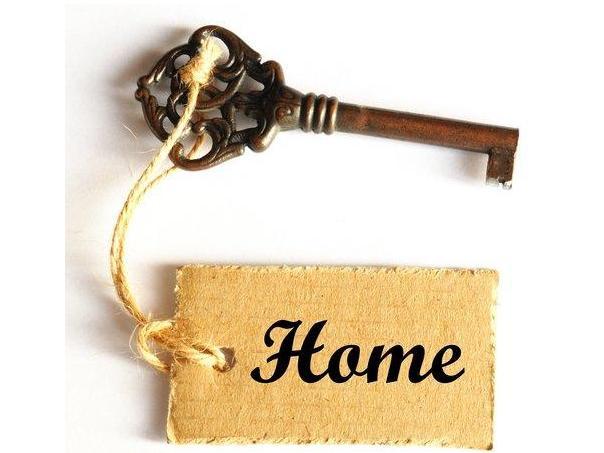
5 Things to Leave for the New Owners of Your Old Home
Selling a home is an emotional event. You are leaving behind a house filled with memories and venturing off to someplace new. The people buying your home are excited to create their own memories in a home that you loved for so many years. Welcome them with a thoughtful gift that will leave a lasting impression.
Here are some ideas for gifts to leave for your home’s new owners.
Personalized Key Rings: Mark this milestone in the new owners’ lives by giving them a special key ring. Engrave it with their initials, the date of the move, or even a special message from you. Not only is this thoughtful, but it’s a practical gift as well.
Mailing labels and stationery: Personalized gifts go a long way. Create mailing labels with the owners’ names and new addresses; if you want to go the extra mile, create personalized stationery for them as well. Leave these paper gifts on the kitchen counter with a nice note to surprise the owners.
Monogrammed Doormat: Doormats are something that may not be at the top of a new homeowner “to-buy” list. Give them a monogrammed one or one that fits well with the decor of the home. They will surely appreciate this gesture.
Practical Items: If you’re skeptical about buying personalized gifts, stick to practical home items. Things like smoke and carbon monoxide alarms, unpacking supplies, or even a utensil organizer are useful to new homeowners. They’ll be so busy when they first move in, and these are essentials that they should have immediately.
A Neighborhood Guide: Write a detailed list of your favorite places in the neighborhood. Mention your favorite restaurants, boutiques, gyms and more. They’ll love having your recommendations on hand when they start to explore!
All of these gestures are incredibly kind and memorable. It’s a nice way to welcome new people into the home and neighborhood you have loved for so long.
Why Owning a Home Is More Than Just Having a Roof Over Your Head
For many, owning a home is the ultimate milestone — a symbol of stability, achievement, and freedom. But beyond the pride of having a place to call your own, homeownership comes with a variety of benefits that can make a lasting impact on your financial and personal well-being.
Let’s dive into the best perks of owning a home.
1. Building Equity Over Time
One of the most significant advantages of homeownership is equity.
Equity is the difference between your home's market value and the amount you owe on your mortgage.
Every monthly mortgage payment helps you build equity.
As home values appreciate over time, your equity grows even faster.
Equity can later be used to fund home improvements, education, investments, or even retirement.
Renters don’t get this — their monthly payments build their landlord's equity, not their own.
2. Stability and Predictability
When you buy a home with a fixed-rate mortgage, your monthly housing payment stays consistent.
No surprise rent hikes.
Easier budgeting and financial planning.
Homeownership brings a sense of stability, both financially and emotionally, knowing you have control over your living space.
3. Tax Benefits
Homeownership may offer several tax perks, including:
Deducting mortgage interest.
Deducting property taxes.
Potential capital gains exclusion when selling (up to $250,000 for individuals, $500,000 for married couples, if you meet the requirements).
These benefits can help lower your overall tax burden.
4. Creative and Personal Freedom
When you own your home, you call the shots.
Paint the walls any color.
Renovate the kitchen.
Build a deck or plant a garden.
Unlike renting, there’s no landlord to ask for permission. Your home can reflect your style, personality, and dreams.
5. Long-Term Investment Potential
Real estate has historically been a solid long-term investment.
Home values generally appreciate over time.
Homeownership can act as a forced savings plan as you pay down your mortgage.
It’s not just a place to live — it’s an asset.
6. Sense of Community
Homeowners often feel a stronger connection to their neighborhood.
More involvement in local events, schools, and community activities.
Greater sense of pride and belonging.
Being a homeowner often means planting deeper roots, leading to meaningful relationships and a supportive environment.
7. Privacy and Control
Owning a home often means more space and privacy than renting.
You can choose your fencing, landscaping, and home layout.
You have full control over who enters your home and when.
This added control contributes to peace of mind and comfort.
8. Generational Wealth
Owning a home is one of the most common ways to build and pass down wealth.
Equity and property value appreciation can be transferred to the next generation.
A paid-off home can serve as a legacy or financial head start for your children or heirs.
Final Thought
Homeownership is more than just a financial decision — it’s an opportunity to invest in your future, create lasting memories, and enjoy the freedom of making a space your own. Whether you’re thinking about buying your first home or upgrading to your next, the perks go well beyond what’s written on paper.


Maple Syrup Time
Ontario bursts with sweetness during maple syrup season, inviting visitors to explore the local festivals running this April.
In Barrie during April 2025, you can expect the Sweet Maple Festival (April 12th), a family-friendly event at Georgian College with a vendor market, pancake breakfast, and kids' activities. Additionally, you can explore the Spring Tonic Maple Syrup Festival at the Tiffin Conservation Area (April 5-6.
1. Sweet Maple Festival:
Date: Saturday, April 12th
Location: Georgian College, 1 Georgian Drive, Barrie, ON
Activities:
Vendor market featuring local artisans and businesses
Pancake breakfast (9:00 AM to 1:00 PM)
Kids' area with a special presentation by Zoo to You (1:00 PM to 3:00 PM)
DIY Toppings Station
Interaction with animals
https://www.georgiancollege.ca/news-events/events/sweet-maple-festival/
2. Spring Tonic Maple Syrup Festival:
Date: April 5-6, 2025
Location: Tiffin Conservation Area
Activities:
Learn about maple syrup production in the past and present
Pancake and sausage breakfast with fresh maple syrup
Zoo to You animal show
Dog agility demonstrations
Tractor-wagon rides
Live music
https://barrierotary.com/spring-tonic/
The Dos and Don’ts of Home Improvement DIY Projects
Taking on a DIY home improvement project can be both exciting and rewarding. Whether you’re aiming to add a personal touch to your space or save money on labor costs, rolling up your sleeves and getting the job done yourself can be incredibly fulfilling. However, not all DIY projects are created equal, and without proper planning and execution, your efforts could lead to costly mistakes. To ensure your project is a success, here are some essential dos and don’ts to keep in mind.
The Dos
1. Do Plan Thoroughly
Before you pick up a hammer or paintbrush, take the time to plan every aspect of your project. Create a detailed checklist, gather the necessary materials, and set a realistic budget and timeline. Proper planning reduces the likelihood of surprises and keeps the project on track.
2. Do Your Research
Watch tutorials, read how-to guides, and seek advice from experienced DIYers. The more you know about the process and potential challenges, the better prepared you’ll be. Don’t hesitate to consult professionals or visit your local hardware store for expert advice.
3. Do Invest in Quality Tools
Using the right tools can make a world of difference in the outcome of your project. While it might be tempting to cut costs with cheaper alternatives, investing in quality tools ensures precision, efficiency, and safety.
4. Do Start Small
If you’re new to DIY, start with smaller, less complex projects. Repainting a room, updating cabinet hardware, or creating a simple accent wall can build your confidence and skills before you move on to bigger challenges.
5. Do Prioritize Safety
Always wear the appropriate safety gear, such as gloves, goggles, and masks. Follow safety guidelines for power tools and ensure your workspace is clean and free from hazards. If you’re working with electricity or plumbing, turn off the power or water supply before starting.
6. Do Know Your Limits
Some projects, like structural repairs or major electrical work, are best left to professionals. Recognize when a task exceeds your skill level and hire an expert to avoid costly mistakes or safety risks.
The Don’ts
1. Don’t Skip Prep Work
Preparation is often the most tedious part of a DIY project, but skipping it can lead to poor results. For example, failing to sand and prime a surface before painting can result in uneven coverage and peeling paint.
2. Don’t Underestimate Costs
Many DIYers fall into the trap of underestimating the true cost of a project. Beyond materials and tools, factor in unexpected expenses like extra supplies or repairs if things go wrong.
3. Don’t Rush
DIY projects require patience and attention to detail. Rushing through a project increases the likelihood of mistakes, which can be time-consuming and expensive to fix. Take your time to ensure a high-quality finish.
4. Don’t Ignore Measurements
“Measure twice, cut once” is a golden rule for a reason. Incorrect measurements can lead to wasted materials and frustration. Double-check your numbers to ensure accuracy before making any cuts or purchases.
5. Don’t Overlook Permits and Codes
For larger projects, like building a deck or adding a room, you may need permits and must adhere to local building codes. Failing to do so can result in fines, legal issues, or the need to redo work.
6. Don’t Assume It’s Always Cheaper
While DIY can save money, it’s not always the most cost-effective option, especially if you make mistakes that require professional intervention. Weigh the potential savings against the risks and complexity of the project.
Conclusion
DIY home improvement projects can transform your space and give you a sense of accomplishment, but success lies in careful planning, preparation, and knowing your limitations. By following these dos and don’ts, you can tackle your next project with confidence and create a home you’ll be proud of.
Happy DIYing!


Lucky Charms Bars
Your kids' favorite cereal becomes the base for these adorable treats! Dip them in melted green candy coating and decorate with gold sprinkles and marshmallows for even more adorable sweetness.
As with any Rice Krispies Treat, you have to act fast once the marshmallows are incorporated. It's gets sticky quite quickly, so stir it up and spread it in the pan in a hurry. Using your hands is the easiest way to press the mixture into the pan, but try this tip before you touch the gooey mixture: Wet your hands or lightly spritz them with nonstick cooking spray. This will keep the cereal and marshmallow from sticking to your hands!
What's in Lucky Charms bars?
They're a dessert bar made with Lucky Charms cereal. There's plenty of butter and marshmallows to help the cereal stick together, along with a little vanilla extract for flavor and salt to break through some of the sweetness. The cereal bars are cut and dipped in a bright green coating, then topped with shiny gold sprinkles—it's one of the cutest little St. Patrick's Day desserts ever!
How many boxes of Lucky Charms do you need?
This recipe calls for 9 cups of Lucky Charms. That means you'll need two (10.5-ounce) boxes of cereal or 1 (18.6-ounce) family size box. Either way, there will be some leftover cereal. Have it for a St. Patrick's Day breakfast!
1. Lightly coat a metal 13-by-9-inch pan with nonstick cooking spray. Line the pan with parchment paper, making sure to leave an overhang for easy removal later. Lightly spray the parchment with nonstick cooking spray.
2. Place a large, heavy-bottomed pot over low heat; lightly spray the inside of the pot with nonstick cooking spray. (This will help with getting the marshmallow and cereal mixture out of the pot.) Add the butter, letting it melt completely before adding the marshmallows to the pot. Make sure to stir every so often until the marshmallows are melted. The mixture should be completely smooth at this point. Stir in the vanilla and salt. Once the salt has melted into the marshmallow, remove the pan from the heat, and stir in the cereal, 3 cups at time. This helps to make sure the marshmallow and cereal are thoroughly combined.
3. Immediately pour the mixture into the prepared pan. Lightly coat your hands with nonstick cooking spray to help keep the mixture from sticking to your hands while pressing it into an even layer. Let the treats cool completely, at least 30 minutes.
4. Once cool, gently pull on the overhanging parchment to lift out the whole treat. Place on a cutting board and cut into 2 1/2-by-3-inch bars. Set them aside on a sheet pan lined with parchment paper.
5Meanwhile, melt the wafers in a small, heatproof bowl set over a pot of almost simmering water, stirring every so often, until smooth. Remove the bowl from the heat and dip each rectangle into the candy coating diagonally, letting the excess coating drip off. Return the dipped bars to the prepared sheet pan.
6. While the candy coating is still wet, decorate with a few of the reserved marshmallows and sprinkles. Once all are dipped and decorated, set aside until the coating is completely set.
Serve immediately and enjoy!
Setting Real Estate Goals in 2025:
A Blueprint for Success
Here’s how to set effective real estate goals in 2025 and position yourself for success.
1. Reflect on Your "Why"
Before diving into specific goals, take a moment to understand your motivation. Are you looking to build generational wealth, create passive income streams, or secure a forever home for your family? Clarifying your purpose will provide the foundation for meaningful and achievable goals.
2. Analyze the Market Trends
In 2025, the real estate market is shaped by:
Interest Rates: Plan your financing strategy to accommodate borrowing costs.
Sustainability and Smart Homes: Eco-friendly features and smart technologies are in demand.
Urban vs. Suburban Shifts: The post-pandemic world continues to redefine the desirability of urban and suburban living.
Stay informed about local and national trends to align your goals with market realities.
3. Define Specific and Measurable Objectives
Vague goals can lead to scattered efforts. Instead, adopt the SMART framework:
Specific: Instead of saying, “I want to invest in real estate,” say, “I want to purchase a two-bedroom rental property in Barrie, Ontario.”
Measurable: Quantify your goals, such as saving for a down payment by December 2025.
Keep in mind he minimum down payment for a first-time home buyer in Ontario depends on the purchase price of the home:
- $500,000 or less: 5% of the purchase price
- $500,000 to $1.5 million: 5% of the first $500,000, plus 10% of the remaining balance
- $1.5 million or more: 20% of the purchase price
Achievable: Set goals that are ambitious but realistic given your resources.
Relevant: Ensure your goals align with your broader financial and personal objectives.
Time-bound: Set deadlines to maintain focus and momentum.
4. Build a Strong Network
Real estate success often hinges on collaboration. Surround yourself with a team of experts:
Agents and Brokers: Choose professionals who know your target market inside and out.
Mortgage Lenders: Shop around for competitive rates and flexible terms.
Contractors: Reliable tradespeople can make or break renovation projects.
Mentors and Peers: Learn from those who’ve already achieved what you aspire to accomplish.
5. Prioritize Financial Readiness
Real estate is a capital-intensive endeavor. Strengthen your financial position by:
Improving Credit Scores: Aim for a score of 700+ to access favorable loan terms.
Saving Aggressively: Create a dedicated fund for down payments and closing costs.
Reducing Debt: Lower your debt-to-income ratio to improve your borrowing capacity.
6. Monitor Progress and Adjust
Set regular checkpoints to assess your progress. If you’re falling behind, reevaluate your strategy and make necessary adjustments. The market can change quickly, so staying flexible is key.
7. Embrace a Long-Term Perspective
Real estate is rarely a get-rich-quick scheme. Whether you’re investing or buying your dream home, patience and persistence often yield the best results. Commit to ongoing learning and improvement.
Final Thoughts
Setting real estate goals in 2025 requires a blend of strategic planning, market awareness, and personal discipline. By following these steps, you can turn your ambitions into actionable plans and achieve lasting success in the ever-evolving world of real estate.
Here’s to making your real estate dreams a reality this year!


Open Houses Can Be an Effective Tool for Selling
Hosting an open house is a powerful strategy for attracting potential buyers and generating interest in your home. It provides an opportunity for buyers to experience the property firsthand, ask questions, and visualize themselves living there. When executed correctly, an open house can lead to a quicker sale and even multiple offers.
Why Open Houses Matter
Open houses serve as a marketing tool that allows sellers to showcase their home to a broad audience in a relaxed setting. Some of the key benefits include:
Increased Exposure – Hosting an open house draws attention from buyers who may not have scheduled a private showing.
Encourages Immediate Interest – A well-attended open house can create a sense of urgency and competition among buyers.
Personal Connection – Potential buyers get a chance to walk through the home and visualize themselves living in the space.
Feedback Opportunity – Sellers and real estate agents can gather valuable feedback about the home’s appeal and potential areas for improvement.
Tips for a Successful Open House
1. Enhance Curb Appeal
Since first impressions matter, make sure your home’s exterior is inviting. Maintain the lawn, clean the driveway, and add some fresh flowers or a new welcome mat to create an inviting entrance.
2. Stage the Home
Proper staging can make a home feel warm and inviting. Declutter, depersonalize, and arrange furniture in a way that highlights the home’s best features.
3. Promote the Event
Marketing is key to a successful open house. Advertise on social media, local real estate websites, and use professional signage to attract passersby.
4. Provide Informational Materials
Have brochures or flyers with details about the home, including price, features, and contact information for follow-ups.
5. Offer Refreshments
Small touches, like providing coffee and snacks, can make visitors feel welcome and encourage them to stay longer to explore the home.
6. Be Ready to Answer Questions
Potential buyers will have questions about the home, neighborhood, and utilities. Be prepared with answers to help them make an informed decision.
Final Thoughts
An open house is a valuable tool for attracting serious buyers and creating buzz around your home listing. By preparing thoroughly and marketing effectively, you can increase the chances of securing a great offer. Whether you’re a first-time seller or a seasoned homeowner, leveraging an open house can help make the selling process smoother and more successful.
Why Home Appraisals Matter When Selling Your Home
When selling your home, an appraisal is a critical step that can significantly impact the final sale price and the overall transaction process. A home appraisal determines the fair market value of your property, providing both sellers and buyers with a professional assessment of what the home is worth. Understanding the importance of home appraisals can help you prepare for a successful sale.
What Is a Home Appraisal?
A home appraisal is an unbiased estimate of a property's value conducted by a licensed appraiser. The appraiser evaluates various factors, including:
Location – The neighborhood, school district, and proximity to amenities.
Property size and condition – The total square footage, number of bedrooms and bathrooms, and overall condition.
Comparable sales (comps) – Recent sales of similar homes in the area.
Upgrades and improvements – Renovations, modern features, and energy-efficient upgrades.
Why Home Appraisals Matter
1. Determining Fair Market Value
An appraisal provides an objective assessment of your home’s value, ensuring that buyers and lenders have a clear understanding of what the property is worth. This prevents overpricing or underpricing the home, which can impact its saleability.
2. Influencing Buyer Financing
Lenders require an appraisal before approving a mortgage to ensure they are not lending more than the home is worth. If the appraisal comes in lower than the agreed-upon sale price, buyers may need to renegotiate, make a larger down payment, or walk away from the deal.
3. Helping with Pricing Strategy
Knowing your home’s appraised value helps set a realistic listing price. Overpricing can deter buyers, while underpricing may result in lost profits. A fair market value ensures a smoother and quicker sale.
4. Negotiation Leverage
A strong appraisal report gives sellers leverage during negotiations. If a buyer challenges the asking price, a solid appraisal can support your valuation and justify the price.
How to Prepare for a Home Appraisal
To ensure the best possible appraisal outcome, consider these steps:
Enhance curb appeal – First impressions matter, so tidy up landscaping and exterior features.
Make necessary repairs – Fix minor issues such as leaky faucets, chipped paint, or broken fixtures.
Highlight upgrades – Provide a list of recent renovations, including receipts and documentation.
Clean and declutter – A well-presented home appears more valuable and well-maintained.
Final Thoughts
A home appraisal is a crucial part of the selling process, impacting pricing, buyer financing, and overall transaction success. By understanding its role and preparing accordingly, you can ensure a smoother sale and maximize your home’s value in the market.
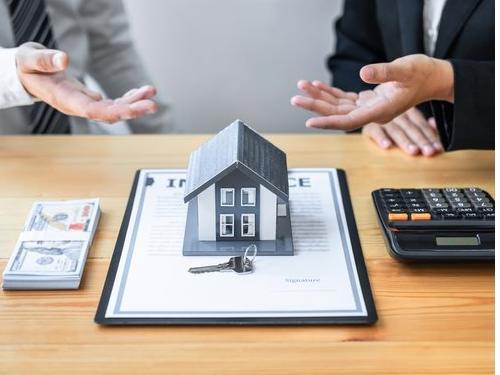

Valentine Cookies
These simple to make, easy to roll-out, Valentine Cookies holds their shape perfectly while baking, and have a great not-too-sweet, buttery flavor and crisp texture that is perfect for covering in chocolate and sprinkles.
Ingredients:
▢1 cup (226 g) unsalted butter softened
▢¾ cups (150 g) sugar
▢1 teaspoon vanilla extract
▢½ teaspoon salt
▢1 large egg yolk
▢2 ¼ cups (295 g) all-purpose flour
▢1 cup (170 g) dark chocolate melting wafers
▢1 cup (170 g) white chocolate melting wafers
▢ baking sprinkles for decoration
Instructions:
1.Combine butter and sugar in a bowl and beat until well-creamed.
2. Stir in vanilla extract and salt, stirring until well-combined, and scrape down the sides of the bowl using a rubber spatula to ensure ingredients are well-incorporated.
3. Add egg yolk and beat until combined
4. Gradually add flour until well-incorporated.
5. Transfer dough to clean surface and use your hands to form it into a ball.
6. Flatten into a disk (about 1" thick), cover with clear wrap, and chill for 15 minutes.
7. Preheat oven to 350F (175C) and line cookie sheets with parchment paper. Set aside.
8. Once dough has chilled, transfer it to a clean, lightly floured surface and use a lightly floured rolling pin to roll out to ¼" thickness.
9. Lightly flour your cookie cutters and cut out your shapes, transferring them to ungreased cookie sheet.
9. Bake on 350F for 10-12 minutes (look for the edges to be just beginning to turn lightly golden brown) and allow cookies to cool completely before dipping in chocolate.
10. Prep chocolate by placing dark chocolate melting wafers in one bowl and white chocolate melting wafers in another and melting in microwave.
11. Once chocolate is melted, line a cookie sheet with wax paper and, firmly holding the base of each cookie, dip the surface into the chocolate. Immediately after dipping, place on wax paper lined cookie sheet (chocolate side up) and immediately sprinkle with sprinkles of your choice. Repeat, alternating with white and dark chocolate, until all cookies are covered with chocolate.
12. Allow chocolate to harden before serving.

Why Curb Appeal Matters When Selling a Home:
First Impressions Count
When selling your home, you’ve probably heard the term “curb appeal” tossed around. But what exactly does it mean, and why is it so important? In simple terms, curb appeal refers to the first impression a buyer gets when they see your house from the street. It’s the immediate visual appeal of your home’s exterior, including the yard, front entrance, landscaping, and overall condition. And trust me, first impressions matter—especially in real estate.
In this blog, we’ll dive into why curb appeal is a game-changer when selling a home and offer tips on how to maximize it to make your property more attractive to potential buyers.
1. The First Impression Sets the Tone
When potential buyers drive up to your home, their initial reaction is incredibly important. Studies show that buyers often make a decision about whether or not to proceed with a property within the first 7-10 seconds of seeing it. So, imagine your potential buyers pulling up to a house with an overgrown lawn, peeling paint, or a cluttered porch. Instantly, they could be turned off before even stepping inside.
Good curb appeal creates an inviting, well-maintained exterior that invites buyers to take a closer look. It tells them that the home has been cared for and may be well-kept on the inside too. A well-maintained exterior creates a sense of value and can increase buyers' confidence in the overall condition of the home.
2. It Attracts More Buyers
In today’s competitive real estate market, it’s all about standing out. With online listings and photos being the first exposure most buyers get, curb appeal plays a crucial role in drawing them in to see the property in person.
Homes with great curb appeal tend to stand out in listings and in person. They look well-kept, fresh, and welcoming, which can generate more interest and lead to more showings. More showings mean more chances to sell, and when a property generates significant interest, it can even lead to multiple offers—often pushing the final sale price higher.
3. Curb Appeal Can Increase Your Home’s Value
You might be wondering: Can improving curb appeal actually raise the value of my home? The answer is yes! While it may not directly increase the market value, enhancing curb appeal can certainly boost perceived value. If buyers see that the home is well-maintained on the outside, they’re more likely to assume it’s been cared for on the inside as well.
A fresh coat of paint, a neat lawn, and trimmed hedges give the impression that the house is in excellent condition, which can justify a higher price. According to real estate experts, homes with strong curb appeal often sell for 7-14% more than homes that look run down from the street.
4. It Can Speed Up the Selling Process
The longer a home sits on the market, the more likely it is to become stigmatized as “stale.” Buyers start wondering why it hasn’t sold yet, and that can hurt your chances of getting an offer. Curb appeal is one of the quickest ways to ensure your listing catches the eye of potential buyers early in the process, giving you a better chance of selling faster.
A well-kept exterior suggests that the seller is serious about the property, which can translate into quicker showings and a faster sale. In many cases, homes with excellent curb appeal will sell more quickly than similar homes with lackluster exteriors.
5. It Creates Emotional Appeal
Home-buying is an emotional process. Buyers are often looking for a home that makes them feel a certain way—comfortable, secure, and proud. Curb appeal plays a big role in sparking that emotional connection. A beautifully landscaped yard, inviting front porch, or charming entryway can make buyers envision themselves coming home to a space they love.
When people see a home that looks appealing from the outside, they begin to imagine how it could be their home. That sense of emotional connection can sometimes outweigh the home’s technical details, like its exact square footage or number of bedrooms. After all, people want to fall in love with their homes, not just buy a house.
6. It’s an Easy and Affordable Way to Boost Your Home’s Attractiveness
The great thing about curb appeal is that it doesn’t always require major renovations. Small, affordable upgrades can have a huge impact on how your home is perceived by buyers. Here are some easy and budget-friendly ways to improve curb appeal:
Lawn care: Keep the grass mowed, edges trimmed, and weeds at bay. A neat, green lawn gives your home an instant lift.
Fresh paint or power washing: If your home’s exterior or trim is looking worn, a new coat of paint or a good power wash can make a world of difference.
Add some color: Brighten up the entryway with potted plants, flowers, or even a new welcome mat. Colorful flowers or a vibrant front door instantly make a home look more inviting.
Fix the details: Repair broken steps, clean out gutters, and replace any worn-out or outdated hardware (like doorknobs or light fixtures).
Landscape: Even a few strategically placed shrubs, flowers, or trees can make the front yard look more polished.
These changes don’t have to break the bank but can significantly improve the first impression your home makes.
7. Curb Appeal Reflects the Home’s Maintenance
Buyers want to know that a home has been cared for—both inside and out. If the yard is overrun with weeds, or the paint is chipping, it may raise concerns about other, more costly repairs that could be hiding inside. A well-maintained exterior signals to buyers that you’ve put in the effort to maintain the home, which makes them feel more confident in moving forward with the sale.
A little time and effort spent on curb appeal can demonstrate that the house has been loved and looked after, reducing buyer hesitation.
8. Curb Appeal Is a Competitive Edge in a Seller’s Market
In a competitive market, where there are many similar homes for sale, curb appeal can be the deciding factor that makes one property stand out over others. Buyers often have a limited amount of time to see properties, so homes that look inviting from the outside are more likely to get the attention they deserve. When competing against homes that might be in the same price range or neighborhood, your home’s curb appeal can give you a crucial edge.
Final Thoughts: Don’t Underestimate Curb Appeal
Curb appeal is so much more than just a pretty face for your home—it’s a strategic tool that can boost your home’s perceived value, speed up the selling process, and help you attract more buyers. Whether it’s a simple lawn tidy-up, a fresh coat of paint, or a few colorful flower pots, the exterior of your home sets the tone for everything that follows. So, before you list your home, take a good look at your curb appeal and make sure it’s sending the right message.
After all, first impressions matter, and in real estate, they could make all the difference.
What curb appeal upgrades have you made to your home? Or do you have any questions about how to improve yours? Let me know in the comments!
Finished Basement, do they really add value?
Whether you are an owner looking to invest in your property or a real estate professional working to help a seller, the topic of basement remodeling is sure to come up. Before beginning any project, it is important to understand what you want to get out of the remodel, what is possible on your budget and whether you will receive a return on your investment when you decide to sell your home. Achieving a return on investment can sometimes be difficult. The following are three key considerations for you to keep in mind.
Moisture
If you are taking a basement from unfinished to finished, you will have to take moisture into account. Any leaks, condensation or flooding will have to be dealt with before you start remodeling. This can be a large factor in your rate of return, because the cost to fix these issues can run into the thousands of dollars. If you neglect to deal with these issues first, however, you will pay far more in mold removal, ruined carpets and musty smells.
Labor costs
If you plan on hiring contractors, keep in mind that labor is typically the largest part of the cost. A rule of thumb is that materials are about one-third of the cost to the owner and labor accounts for the other two-thirds. This means that handy homeowners can save significant money by doing part of the remodeling job by themselves. Keep in mind that attempting to do a job that you are not qualified for may end up causing damage or simply look shoddy, which can ultimately mean more expense to pay someone to undo your mistakes. Plumbing and electrical work should always be left to professionals, but installing insulation, hanging drywall, painting and even installing carpet may be within reach.
Egress
Often, for a basement room to be considered a bedroom, building codes will require that a basement have a window large enough for occupants to safely escape in the event of a fire, and for a firefighter to enter wearing full gear. This is important, because adding an exit to your basement's foundation can be expensive if there isn't one present already.
Remodeling a basement can be fun, but to get the best return on your investment, it may take some elbow grease. For those homeowners willing to take the time to do the job inexpensively and effectively, however, there can be a significant payoff.
